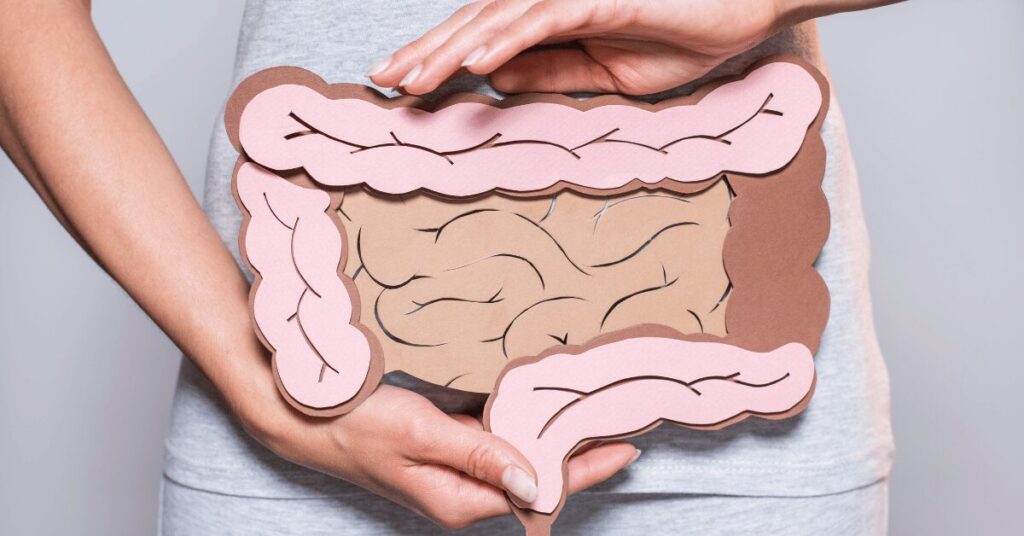
If you’ve ever had a “gut feeling,” you’ve already experienced a profound biological truth:
Your gut and your brain are in constant communication.
And the primary pathway they use is the vagus nerve — a critical player in the gut-brain axis, the bidirectional communication system that links digestion, mood, immunity, and even cognition.
What Is the Vagus Nerve, Really?
The vagus nerve (from Latin vagari, meaning “to wander”) is the tenth cranial nerve, and it lives up to its name.
It originates in the brainstem and innervates multiple organs — including the gut, heart, lungs, liver, and pancreas.
As a core component of the parasympathetic nervous system, the vagus nerve helps regulate:
- Gastrointestinal motility
- Enzyme and digestive fluid secretion
- Heart rate variability (HRV)
- Respiratory patterns
- Immune modulation
- Inflammatory tone via the cholinergic anti-inflammatory pathway
The Gut-Brain Axis: Your Second Brain Speaks
About 80-90% of the vagus nerve fibers are afferent, meaning they send information from the body to the brain — not the other way around.
This means your gut microbiota, intestinal barrier health, and even enteric nervous system activity (your “second brain”) are constantly signaling your central nervous system.
When vagal tone is optimal, your system is more resilient — digestion improves, inflammation decreases, and your brain experiences more neurochemical balance (think serotonin, GABA, dopamine, and acetylcholine).
When vagal tone is impaired, you might notice:
- Bloating or dyspepsia
- Reflux or SIBO-like symptoms
- Brain fog or anxiety
- Mood swings or low stress tolerance
- A general sense of disconnection from your body
Polyvagal Theory: It’s Not Just “Fight or Flight”
Dr. Stephen Porges’ Polyvagal Theory has reshaped how we understand stress and regulation.
It suggests the vagus nerve has two branches:
- Dorsal vagal complex – associated with freeze/shutdown responses
- Ventral vagal complex – associated with safety, connection, and social engagement
We want to cultivate a ventral vagal state — this is where healing, digestion, emotional regulation, and parasympathetic dominance happen.

Functional Practices to Support and Stimulate the Vagus Nerve
From a functional medicine lens, vagal tone is modifiable. Here are evidence-informed ways to enhance it:
1. Vagal Toning Through Breathwork
- Practice coherent breathing: 5.5-second inhale, 5.5-second exhale (around 5-6 breaths per minute)
- Extend your exhale – longer exhalation stimulates the parasympathetic system
2. Cold Exposure (Cryostimulation)
- Splash cold water on your face in the morning
- End your shower with 30 seconds of cold water
- Cold exposure activates the vagus and may support mitochondrial resilience
3. Humming, Chanting, and Singing
- The vagus nerve innervates the vocal cords; vocalization increases vagal output
- Chanting “OM” has been shown to enhance vagal tone and HRV
4. Social Connection and Co-Regulation
- Eye contact, physical touch, laughter, and feeling safe with others directly activate the ventral vagus
- Isolation can inhibit vagal function — community is medicine
5. Gastrointestinal & Microbiome Support
- Target SIBO, leaky gut, or dysbiosis — unresolved GI issues create neuroinflammatory stress
- Support with prebiotic fibers, polyphenols, and fermented foods
6. Mind-Body Practices
- Yoga, Qi Gong, and tai chi integrate breath, movement, and interoception — all of which upregulate the vagus nerve
- Meditation improves cortical control over autonomic function

Vagal Tone is a Biomarker for Resilience
From a root-cause perspective, impaired vagal function is often both a driver and a consequence of chronic health conditions.
Whether you’re navigating:
- IBS or IBD
- Chronic fatigue
- Anxiety or depression
- Autoimmunity
…supporting the vagus nerve is central to whole-person healing. But this is just one piece of the puzzle.
Ready to Take the Next Step?
If symptoms like low energy, mood swings, brain fog, cravings, or digestive discomfort feel like your “new normal,” your gut may be trying to tell you something.
Understanding which type of imbalance you’re dealing with — whether it’s low stomach acid, bacterial overgrowth, or a weakened gut lining — can completely transform your healing approach.
👉 Take the 3-minute “What’s Your Gut Imbalance Type?” Quiz here
and get clarity on what’s actually happening beneath the surface.
You’ll receive a personalized 7-page report with:
✅ Your unique gut imbalance type (and what it means for your symptoms)
✅ Functional medicine-based nutrition + lifestyle strategies tailored to your results
✅ A clear roadmap to start restoring balance, energy, and resilience
This quiz is more than a starting point — it’s a step toward reconnecting with your body and reclaiming your vitality.

What’s Your Gut Imbalance Type?
Take our 3-minute quiz to discover your unique gut type — and get a personalized 7-page report with insights and actionable steps to support digestion, energy, mood, and overall gut health.






